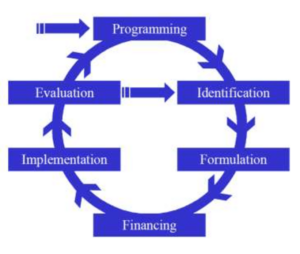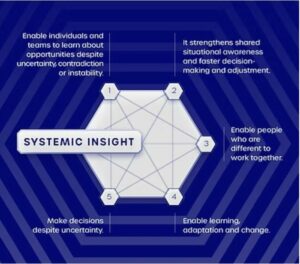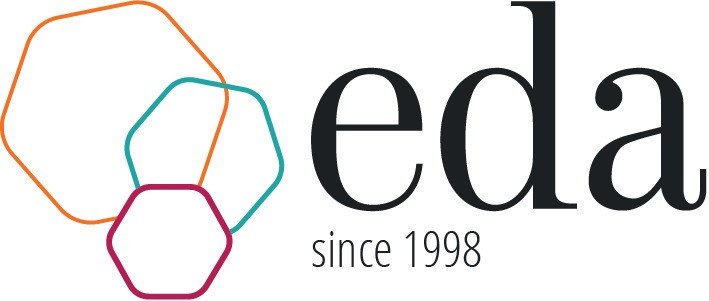Desired change requires purposeful intervention. The intervention, such as project or program, starts with intention of changing something, then goes through design and implementation. In the end, we do or don’t achieve what we want. Even if we didn’t have to make compromises in the design phase, such as those imposed by limited resources, and even if the implementation went smoothly delivering defined outputs, the outcome and impact may not be what was planned.
The thing is that the intervention is implemented in a dynamic environment. Things change. The world will not stand still while we implement our intervention. The intervention is exposed to constant external influences. Therefore, it is not easy, if possible, at all, to know in advance precisely what is going to happen with our intervention.
Although, it is almost impossible for this problem to be solved completely, so that the intervention produces exactly what we planned, there are some actions we can undertake that can increase complexity sensitivity of the intervention, thus increasing probability and level of achievement of desired outcome and impact. One of the things we can do is to constantly make efforts to improve methods that we use. It may be seen as evolution, rather than revolution. Methods that have been in use for quite some time still have value and purpose. One such method is Project Cycle Management (PCM), defined as “a set of project design and management tools (based on the Logical Framework Approach)” (European Commission, Project Cycle Management Guidelines, 2004, page 1). It includes a Logical Framework Approach (LFA) as a “methodology for planning, managing and evaluating programmes and projects, involving stakeholder analysis, problem analysis, analysis of objectives, analysis of strategies, preparation of the Logframe matrix and Activity and Resource Schedules” (Project Cycle Management Guidelines, page 142), where logframe is “the matrix in which a project’s Intervention Logic, Assumptions, Objectively Verifiable Indicators and Sources of Verification are presented” (Project Cycle Management Guidelines, page 142).

Also, PCM is based on logic of linear processes, with clearly defined cause and effect relations, and it can be and still is widely applied. However, PCM assumes a degree of predictability and control that may not hold in today’s increasingly complex environments. Even well-planned interventions are affected by unforeseen changes in context, relationships, and systemic dynamics. So, how can PCM become more complexity-sensitive and adaptive? One promising direction is to combine PCM with Systemic Insight, a framework developed by Mesopartner. Systemic Insight is structured around six “postures” that encourage different ways of thinking and acting in complex settings:
- Pause and Reflect – assess biases and assumptions before acting,
- Discover – build situational awareness without needing full certainty,
- Make Sense – interpret behaviors, signals, and contradictions,
- Define Direction – explore what “better” could look like collectively,
- Act With – take action, include safe-to-fail steps, build momentum with others,
- Adjust – learn and adapt by observing consequences.

These postures can be integrated into or combined with the phases of PCM as follows:
| PCM Phase | Systemic Insight Postures | Rationale |
| Programming | Discover, Define Direction, Pause and Reflect | Explore system patterns, shape shared intent, assess assumptions. |
| Identification | Discover, Make Sense, Define Direction | Understand context, spot patterns, begin building shared understanding. |
| Formulation | Make Sense, Define Direction, Act With | Design adaptive, stakeholder-informed interventions. |
| Financing | Pause and Reflect, Define Direction | Reassess assumptions and align budget with shared strategic direction. |
| Implementation | Act With, Adjust, Make Sense, Pause and Reflect | Act, experiment, learn and adapt in real-time. |
| Evaluation | Adjust, Pause and Reflect, Make Sense | Capture learning, unintended effects, and systemic shifts. |
This approach could bring benefits, such as:
- greater relevance through deeper contextual understanding,
- adaptive responding to complexity and change,
- increased stakeholder ownership and dialogue, and
- improved learning through all phases.
Also, it may be good and worth trying to:
- embed reflection and learning in PCM phases,
- train staff in systems thinking and facilitation,
- use safe-to-fail experiments during implementation, within relevant plans and procedures,
- create regular cycles for Pause–Sense–Adjust reflections.
It could be done by using PCM Guidelines and Systemic Insight Facilitation Kit in workshops for the team and stakeholders. This is just one idea, there are other ways to combine the two above presented concepts.
If we aim to change a world that is already changing, our methods must evolve too.








